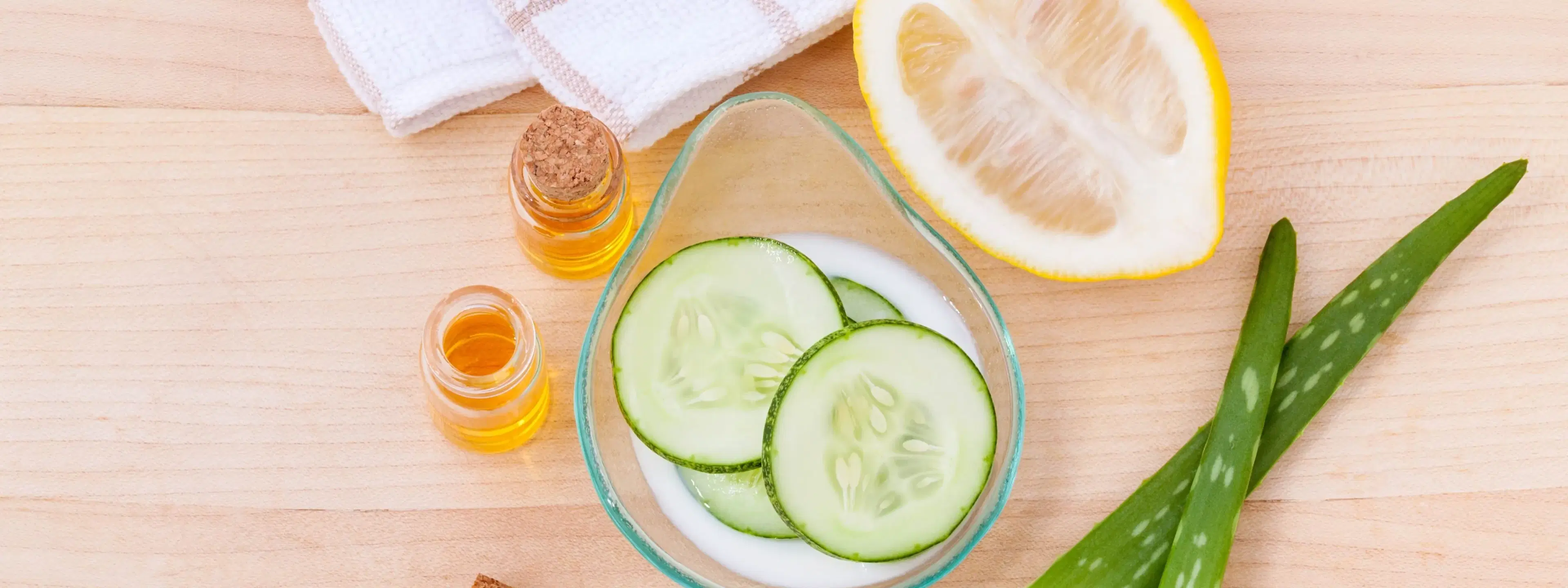
Beauty & Skincare
•04 min read
-9872eb55-9af0-4022-8644-bd8f05e8333e.png&w=3840&q=75)
Radiant, healthy skin is a goal shared by many. Today, we explore two popular options in the beauty world: DIY face serum and store-bought serums. This blog post will help you understand the benefits and drawbacks of both approaches. You will also gain insights on how to make face serum at home and compare it to the ready-to-use options available on the market.
Face serums are lightweight, fast-absorbing liquids that deliver a punch of active ingredients. They target specific skin concerns such as hydration, anti-aging, brightening, and acne control. Unlike moisturizers, serums penetrate deeper to provide concentrated nutrients. Whether you opt for a homemade face serum or choose a store-bought version, the aim is to boost your skin's health and appearance.
The ingredients you use determine the serum's effect. For a DIY serum, natural face serum ingredients like aloe vera, essential oils for face serum, carrier oils, and vitamin C are popular choices. These components allow you to create a custom face serum guide tailored to your skin type. In contrast, store-bought serums often include scientifically tested components like hyaluronic acid, retinol, peptides, and niacinamide. These ingredients ensure efficacy and stability in every bottle.
Many enjoy creating their own skincare products because DIY face serums are highly customizable. You can adjust the formula to target oily, dry, or sensitive skin. Using homemade face serum techniques gives you the freedom to incorporate organic face serum recipes that are chemical-free. Moreover, making DIY skincare products can be more cost-effective than buying premium products from stores.
If you are interested in natural skincare recipes, here are a few ideas:
For Dry Skin: Mix aloe vera gel, rosehip oil, and vitamin E to provide deep hydration.
For Oily Skin: Blend witch hazel, tea tree oil, and jojoba oil to control excess sebum.
For Glowing Skin: Combine vitamin C powder, distilled water, and glycerin for a brightening effect.
These DIY beauty treatments allow you to experiment with natural ingredients and find what best suits your skin.
-5ba1f1f6-995b-4617-a1ff-43890351cff7.png&w=3840&q=75)
While a homemade face serum offers many benefits, there are a few challenges. DIY serums often have a short shelf life due to the absence of preservatives. Their effectiveness may not be supported by extensive research like store-bought formulas. Beginners might also find it tricky to achieve the right consistency and absorption rate. These factors are important to consider in your overall skincare routine with DIY serum.
Store-bought serums have undergone rigorous testing, ensuring proven efficacy and safety. They save you time by offering ready-to-use formulas. Many of these products incorporate advanced technology through ingredients such as peptides and retinol. This approach gives you a reliable option for targeting concerns like fine lines and dull skin. For those who prefer convenience, store-bought serums are designed to fit easily into your daily skincare routine.
There is a variety of store-bought serums available to cater to different needs. Hydrating serums often focus on providing intense moisture with hyaluronic acid. Brightening options may include vitamin C and niacinamide, enhancing radiance. Anti-aging serums frequently contain retinol and peptides to help reduce fine lines and wrinkles. Each type is developed to address specific skincare challenges and provide targeted results.
Although these serums are convenient and effective, they come with some drawbacks. Premium formulations can be expensive, potentially stretching your budget. Some products might include synthetic chemicals that could irritate sensitive skin. Additionally, store-bought options may take a generic approach, meaning they might not cater perfectly to highly specific skin needs. Balancing these factors is crucial when you decide which option aligns with your skincare goals.
The choice between a DIY face serum and a store-bought serum ultimately depends on what you value most. DIY serums allow for complete customization. You can choose natural face serum ingredients and create a custom formula that suits your skin. On the other hand, store-bought serums provide convenience and are often backed by scientific research. They use advanced synthetic ingredients, which may ensure stronger results in certain cases. The trade-off is often between personalization and ease of use.

When deciding, think about your skin type and specific concerns. DIY options are perfect if you want to tailor your blend with essential oils for face serum and other organic components. However, if you have a busy lifestyle, the convenience of store-bought serums might be more appealing. Also, consider your skincare goals. For instance, if you need a targeted solution for ages or severe acne, a store-bought serum may work better. Knowing these factors can guide you to the best decision for your routine.
Expert Tip: Choose Ingredients Based on Skin Type
When making a DIY face serum, select ingredients that match your skin type. For oily skin, opt for lightweight oils like jojoba and tea tree oil. For dry skin, choose nourishing oils like avocado or rosehip. Store-bought serums often list the ideal skin types on their labels, making it easier to pick the right product.
The best homemade serum depends on your skin needs. A DIY vitamin C serum with aloe vera and glycerin works well for glowing skin.
Start with a base like distilled water or aloe vera gel, then add essential oils for face serum and carrier oils. Follow a custom face serum guide for exact measurements.
Yes, natural skincare recipes allow you to choose mild ingredients that suit sensitive skin, making them an ideal DIY beauty treatment.
Generally, yes. Without preservatives, homemade face serum recipes tend to spoil faster compared to store-bought versions.
Both DIY and store-bought face serums have unique advantages. DIY serums offer customization and the benefit of using organic, natural ingredients. Meanwhile, store-bought serums provide convenience, stability, and advanced formulations. Consider your budget, time, and skincare needs when making a choice. With this guide, you can confidently decide which option aligns best with your journey to radiant, healthy skin.